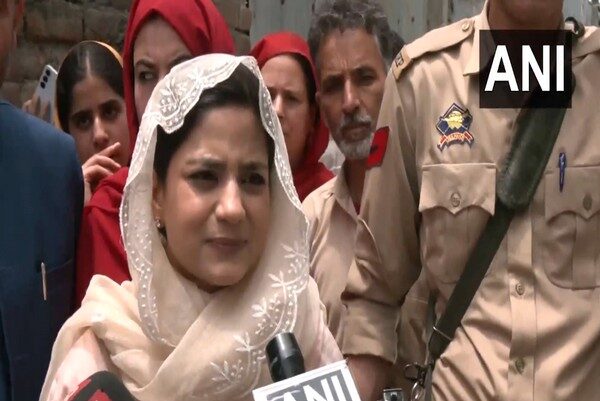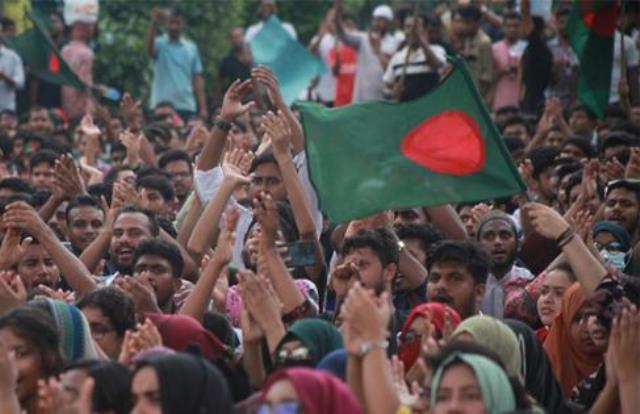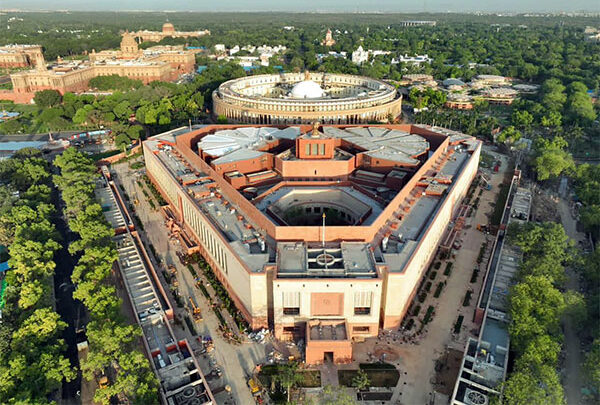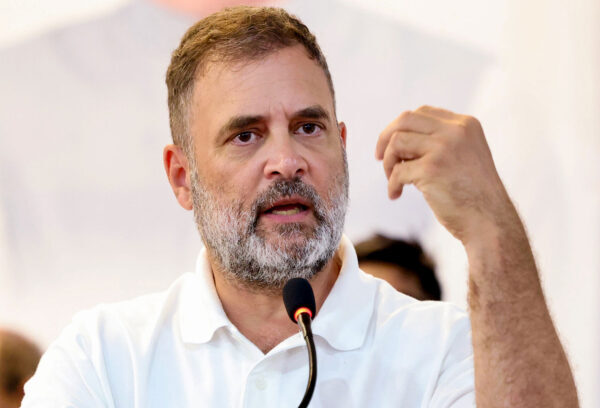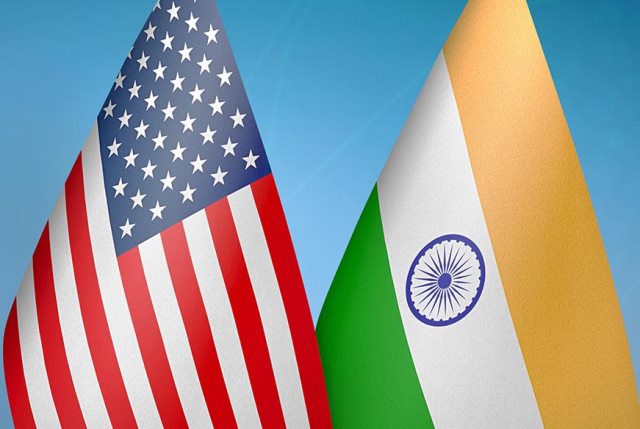
Indian Trade Groups Disappointed With Trump’s View About Tariffs On India
Indian trade bodies have expressed disappointment over US President Donald Trump’s decision to impose 25 per cent tariffs and additional penalties on imports of goods from India, calling it a setback for the Indian export market while also highlighting potential opportunities for export diversification and supply chain realignment.
While some trade and industry leaders warned of short-term disruptions, others expressed confidence that India’s strong manufacturing base, especially in sectors such as pharmaceuticals and medical equipment, would help it withstand the impact and forge new trade partnerships.
Subhash Goyal, Chairman of the Tourism Expert Committee at the Chamber of Commerce, called it “a sad day for Indian exports,” warning that the tariffs would slow exports and impact manufacturing.
“It is a sad day for Indian exports because India is doing exports worth over USD 100 billion, and the surplus is over USD 40 billion,” Goyal said, adding, “It will slow down some of our exports, and there will be a ripple effect on our manufacturing… But it will also adversely affect the American consumers. We are seeing that a lot of American airports are devoid of tourists… India will also have to diversify its export markets, and it will have to relook at certain Asian and European markets.”
Dilip Kumar, Chairman of Medical Tourism, Chamber of Commerce, said, “… He (US President Trump) is trying to kill the market of the Indian economy, but it is not going to happen. The reason behind this is that we are exporters, especially of medical equipment, pharmaceuticals, and disposables, which mostly come from India.”
“The American market is dependent upon the Indian and Chinese markets… The cost of the treatment and procedure will increase in America… His country’s people are affected by this rather than India. India won’t be impacted, as we will go by the route of exporting to the European countries. We can survive in the toughest times and bounce back,” Kumar added.
Ranjeet Mehta, CEO and Secretary General of the PHD Chamber of Commerce and Industry (PHDCCI), said India is now entering an era of global supply chain realignments.
“The US is also recalibrating its trade policy by imposing tariffs on major exporting economies like China, Vietnam, Bangladesh and India. There will be a momentary impact on our MSMEs, but we see this as an opportunity as well. This is the time that India scales it up… we have the demographic dividend, technological agility, and entrepreneurial depth. India is being seen as one of the most promising partners by the global leaders looking to de-risk their over-dependence on selected economies… Even the US consumers will have to pay more for the products. When there are numerous tariffs across economies, the consumer will be impacted ultimately,” he said.
Mehta added, “Recently, India has signed a comprehensive agreement with the UK. We are in advanced (stage of) discussions with various nations… India is going to gain with the tariff imposed, because it will emerge as a very reliable partner for the global players looking to realign their supply chain…”
US President Trump on Wednesday announced 25 per cent tariffs on India starting August 1. Trump also said India will face additional penalties for purchasing oil from Russia.
“Remember, while India is our friend, we have, over the years, done relatively little business with them because their Tariffs are far too high, among the highest in the World, and they have the most strenuous and obnoxious non-monetary Trade Barriers of any Country. Also, they have always bought a vast majority of their military equipment from Russia, and are Russia’s largest buyer of ENERGY, along with China, at a time when everyone wants Russia to STOP THE KILLING IN UKRAINE – ALL THINGS NOT GOOD! INDIA WILL THEREFORE BE PAYING A TARIFF OF 25%, PLUS A PENALTY FOR THE ABOVE, STARTING ON AUGUST 1st. THANK YOU FOR YOUR ATTENTION TO THIS MATTER. MAGA!”, Trump said in a post on his Truth Social account.
The Federation of Indian Chambers of Commerce & Industry (FICCI) expressed disappointment over the decision, with its President Harsha Vardhan Agarwal calling the move “unfortunate” and saying it would “have a clear bearing on our exports.”
“FICCI is disappointed by the decision taken by the U.S. to levy a 25 per cent tariff on exports from India and impose secondary sanctions. While this move is unfortunate and will have a clear bearing on our exports, we hope that this imposition of higher tariffs will be a short-term phenomenon and that a permanent trade deal between the two sides will be finalised soon,” Agarwal said in a statement.
Dr Ajay Sahai, DG and CEO of Federation of Indian Export Organisations (FIEO), said the penalties were “disappointing” and that discussions with the US on a Bilateral Trade Agreement (BTA) were ongoing.
“The 25 per cent tariff imposed on India is a little disappointing for us, and we are constantly engaged with the US on the BTA. The ‘penalty’ President Trump has talked about is also not clear… In a few months, there will be a BTA between India and the US, and these tariffs will come down significantly…” Sahai said.
Manoranjan Sharma, Chief Economist of Infomerics Ratings, suggested that Indian industries will have to do some kind of repositioning.
“This is important because the US is our largest trading partner and the largest exporting destination. We can offset this impact to a limited extent by trade agreements with the UK, the European Union, and the Middle East. There is no doubt that this will cause a major hit on the incomes and profits of the products of the companies exporting to the US,” he said.
Claiming that the recent US-Indonesia trade deal was a “clear example of how aggressive US pressure can force” countries to ink one-sided agreements, think tank Global Trade Research Initiative (GTRI) suggested that India be careful and not “fall into the same trap”.
Ajay Srivastava, founder of the GTRI told ANI that 25 per cent tariffs would have a varied impact on different sectors. He essentially meant that India will have a competitive advantage vis-à-vis countries that have been slapped with even higher tariffs.
US President Trump’s decision came two days ahead of the impending US tariff deadline of August 1.
Over the past few months, India and the US have been negotiating for an interim trade deal, but there were some reservations from the Indian side on the US demand for opening up the agricultural and dairy sectors for the US. Agriculture and dairy are critical for India as these two sectors provide livelihood opportunities to a large section of its people.
US President Trump had imposed reciprocal tariffs on dozens of countries with which the US has a trade deficit. Later, President Trump decided to pause the tariffs for 90 days after many countries initiated talks with the US administration for a trade deal. In these 90 days, starting April 9 and ending on July 9, President Trump imposed a 10 per cent baseline tariff on all countries.
The Trump administration had deferred imposing additional tariffs on several countries till August 1, and had indicated a further extension was unlikely. Since assuming office for his second term, President Trump has reiterated his stance on tariff reciprocity, emphasising that the United States will match tariffs imposed by other countries, including India, to ensure fair trade.
On Tuesday, ahead of the self-imposed August 1 deadline date for tariffs to come into effect, President Trump had stated that the India-US trade deal was “working out very well” but hinted at a 20 per cent to 25 per cent tariff, which he eventually announced today.
Representatives of India’s Department of Commerce and the Office of the U.S. Trade Representative have held several rounds of talks to conclude a trade agreement.
India and the United States have agreed to expand bilateral trade to reach USD 500 billion by 2030, including through the conclusion of a Bilateral Trade Agreement by the fall of 2025. (ANI)
